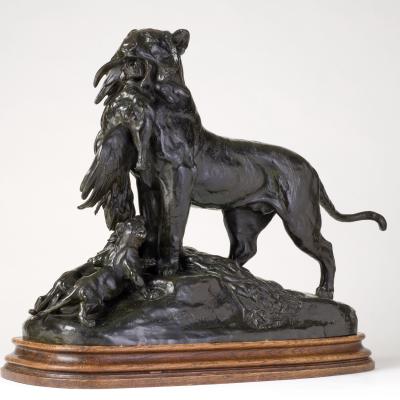artist
Cain apprenticed with the wood sculptor Alexandre Guionnet, an early exponent of the animalier genre, who sent animal groups to the Salon between 1831 and 1859. He went on to study modeling with François Rude, whilst at the same time spending hours in Paris’s Jardin des Plantes where he sketched from the live animals in the zoo.
Cain married Julie Mêne, the only child of Pierre-Jules Mêne, in 1852. The couple had two sons, Eugène-Henri and Georges-Jules-Auguste, who went on to become the curator of the Musée Carnavalet.
provenance
The Collection of the Artist’s family;
Léon Pierre Aubey; and thence by descent
Sothebys , 2008
literature
Lami, vol. 1, pp. 233-38
Payne, no. C86, p. 155


